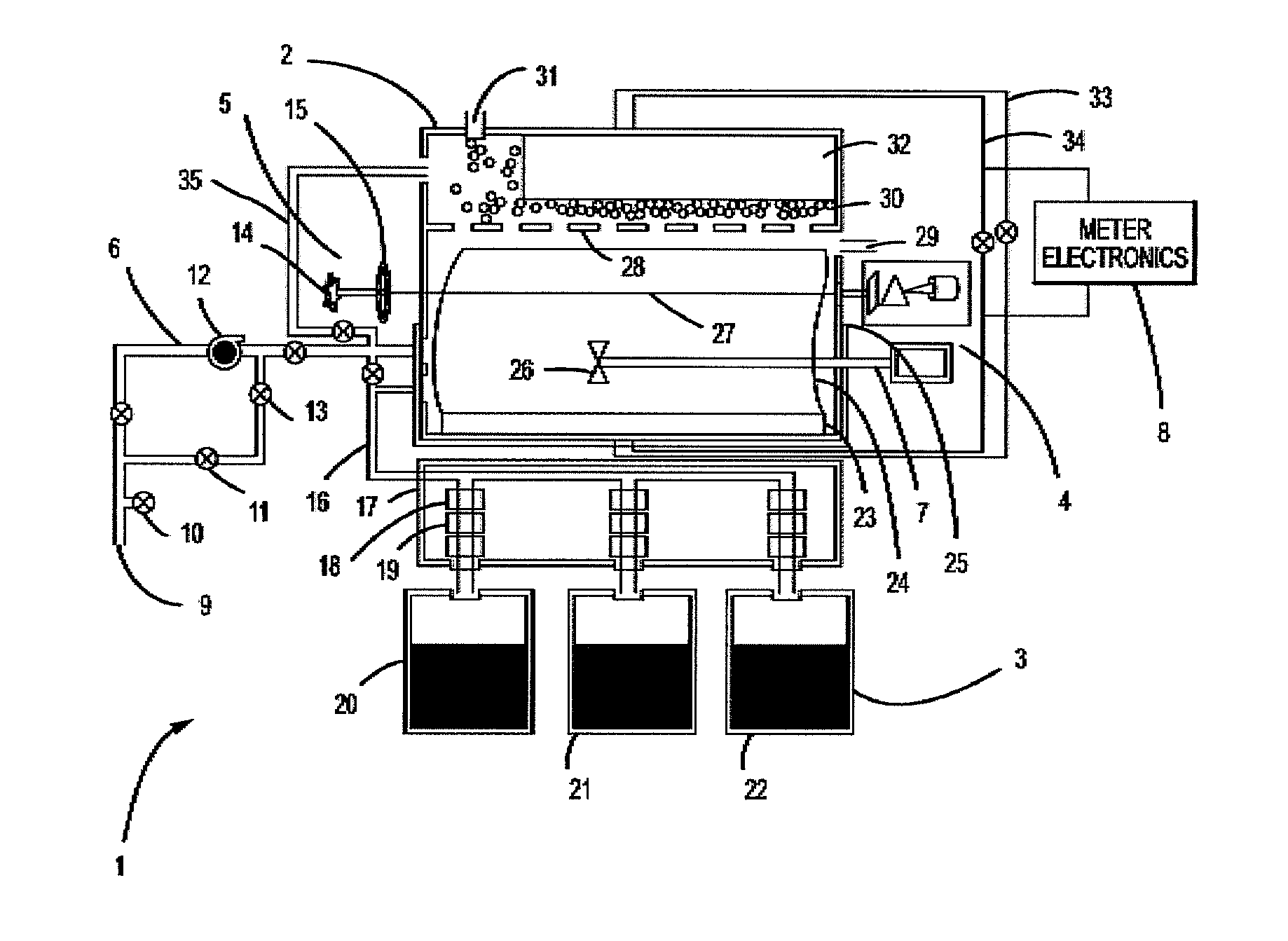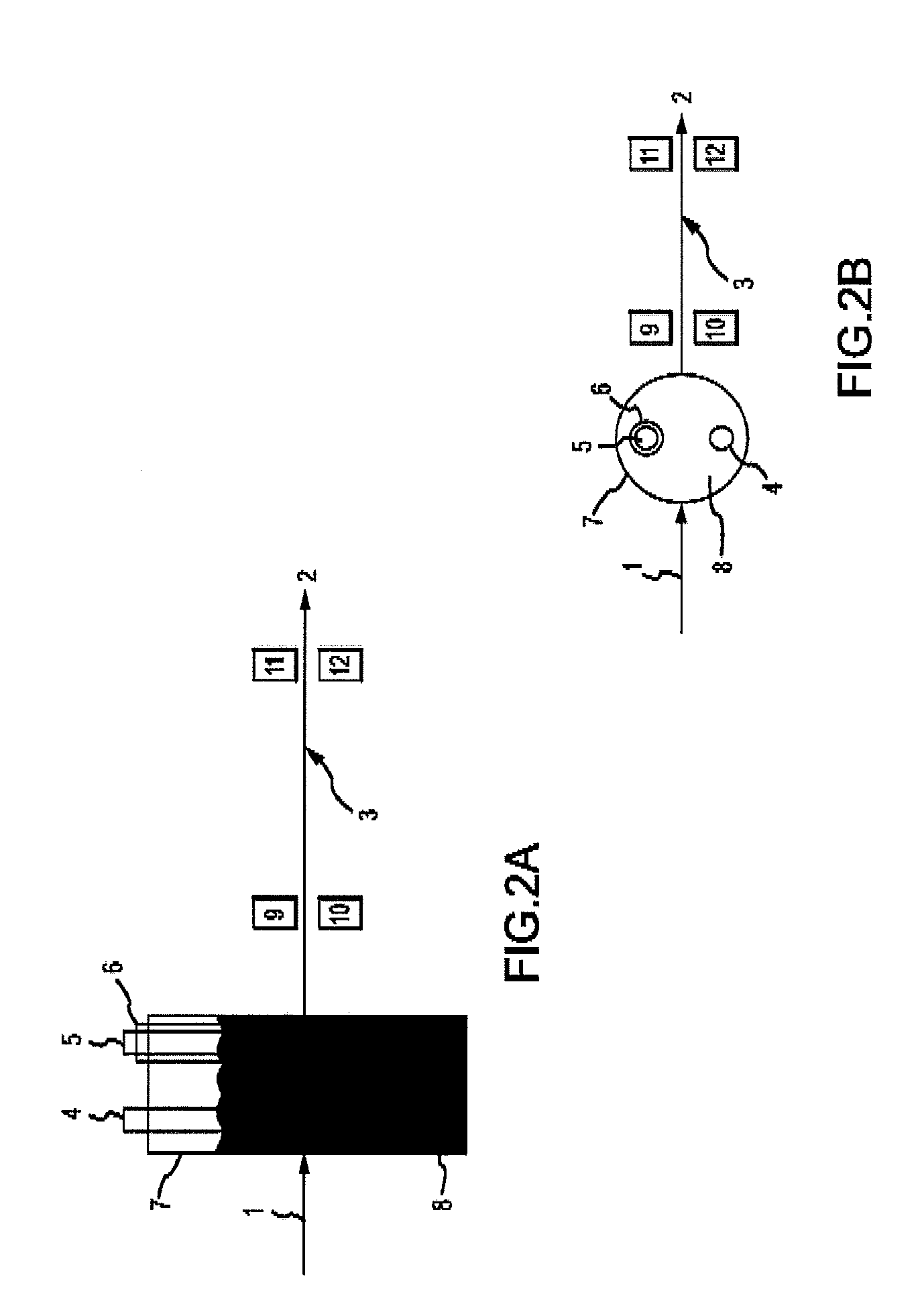Apparatus, composition and method for determination of chemical oxidation demand
- Summary
- Abstract
- Description
- Claims
- Application Information
AI Technical Summary
Benefits of technology
Problems solved by technology
Method used
Image
Examples
example 1
Electrochemical Production of Potassium Ferrate:
[0093]Potassium ferrate (K2Fe2O4) was made according to the synthesis described by Diwakar Tiwar et al., www.lntechopen.com, “Ferrate (VI) in the Treatment of Wastewater: a New Generation Green Chemical,” with the following differences. 1) the anodic and cathodic compartments are separated by a frit or membrane as previously described; 2) maintenance of a constant temperature using a water bath for the EC cell at 60 C; 3) use of 14.5 M KOH; and 4) use of steel wool or CRS 1018 for electrodes. In general, an electrochemical cell operated at about 300-500 ml capacity was equipped with two CRS 1018 (cold rolled steel, 0.15-0.2% carbon, 0.6-0.9% Mn, 0.04% P, 0.05% S) flat iron electrodes, dimensions 6.5 cm×2.5 cm×0.5 cm. The cathode was segregated from the rest of the EC cell by an open-topped glass tube having a porous PTFE frit, 1 / 16″ pore size, positioned across the bottom so that evolved Hydrogen gas could not readily dissolve into the...
example 2
Oxidation of Organic Compounds in a Laboratory Model:
[0094]Standard COD apparatus was used to oxidize different concentrations of Sucrose, Urea, Thiourea and Potassium Chloride at 40 mg / L and 400 mg / L, and then measure the degradation in spectroscopic absorbance of ferrate ion at 504 nm. To a 35 ml glass cuvette, 8 cm×2 cm, with a twist-top closure was added 6 ml of deionized water, 5 ml of 5 mM potassium ferrate solution, and 3 ml sample or blank. Total volume in the spectroscopic cuvette was 14 ml. The solutions were allowed to oxidize for approximately ten minutes, then measured for absorbance. These steps are described in the schematic of FIG. 7. A Hach brand DR6000 spectrophotometer was used to measure absorbance of the blank and samples at 504 nm. Results are shown in FIGS. 4A and 4B. FIG. 4A is a series of spectroscopic scans acquired at ˜10 minutes after the addition of the electro-synthesized liquid ferrate (oxidant) to the sample / blank solution. FIG. 4B is a series of diff...
##ic example 3
Prophetic Example 3
[0098]Determination of AOC:
[0099]The following materials would be needed to determine AOC of a sample: standard bacterial microorganisms (e.g. Pseudomonas fluoresens and Spirillum); an incubator; organic free water; ferrate; and a food source for the microorganisms including monosaccharides, primary amines, and low molecular weight (<10,000 nominal molecular weight) dissolved organic carbon.
[0100]An amount of the food source is added to the microorganisms and the initial amount of organic compounds in the food source is determined by ferrate oxidation. The decrease in the ferrate absorbance due to the oxidation of the organic compounds is used to quantify the initial amount of organic compounds. This initial amount of organic compounds is represented by the value X.
[0101]The test waters containing the microorganisms are then incubated at 15° C. and sampled repeatedly to establish stable values that indicate the completion of the growth of the microorganisms. After...
PUM
 Login to View More
Login to View More Abstract
Description
Claims
Application Information
 Login to View More
Login to View More - R&D
- Intellectual Property
- Life Sciences
- Materials
- Tech Scout
- Unparalleled Data Quality
- Higher Quality Content
- 60% Fewer Hallucinations
Browse by: Latest US Patents, China's latest patents, Technical Efficacy Thesaurus, Application Domain, Technology Topic, Popular Technical Reports.
© 2025 PatSnap. All rights reserved.Legal|Privacy policy|Modern Slavery Act Transparency Statement|Sitemap|About US| Contact US: help@patsnap.com



